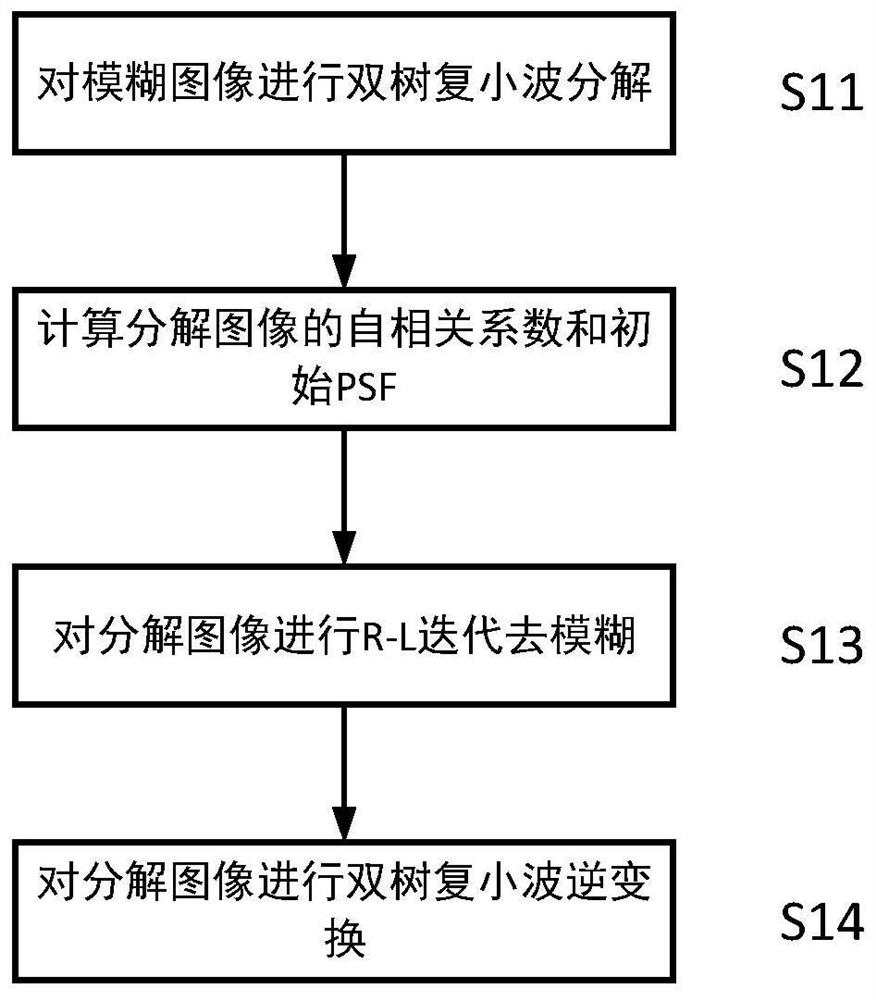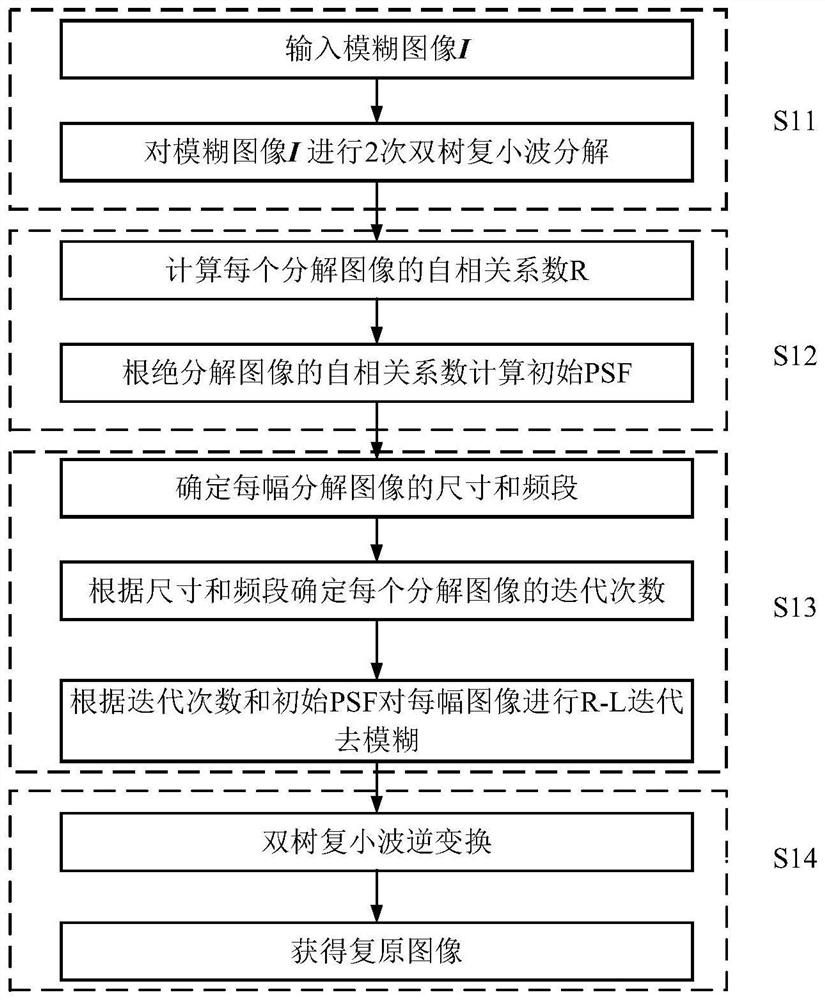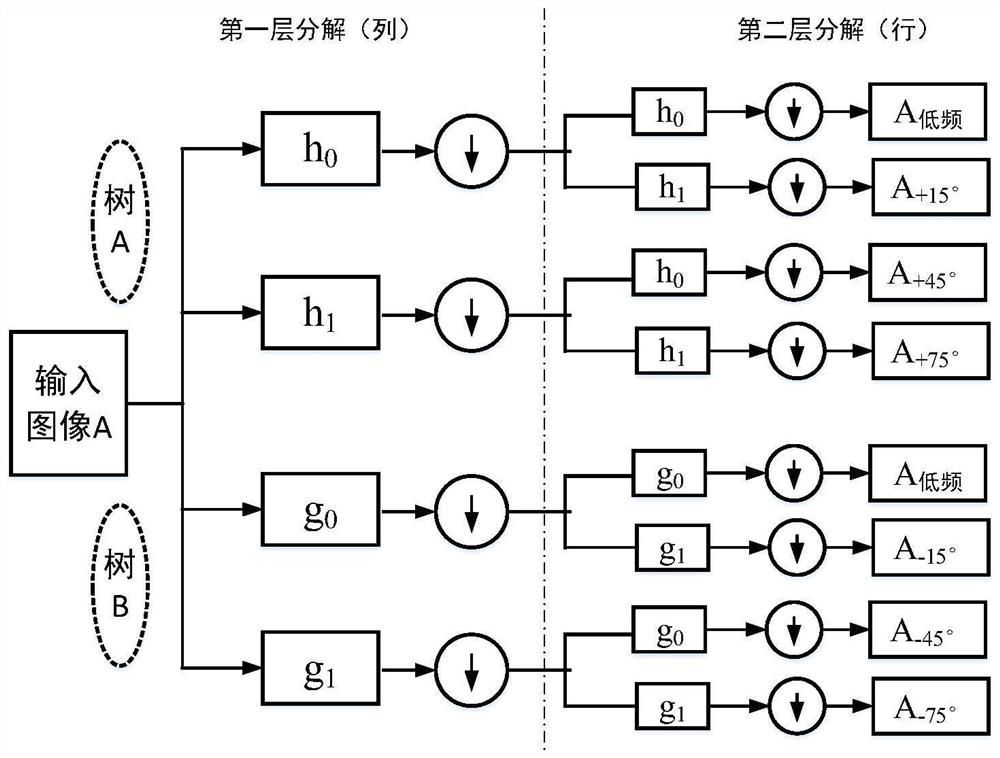Image restoration method of blurred image, storage medium and terminal
A technology for blurring images and images, which is applied in the field of image restoration and can solve problems such as noise amplification
- Summary
- Abstract
- Description
- Claims
- Application Information
AI Technical Summary
Problems solved by technology
Method used
Image
Examples
Embodiment 1
[0042] like Figure 1-2 As shown, in embodiment 1, a kind of image restoration method of blurred image specifically comprises the following steps:
[0043] S11: performing wavelet decomposition on the image to be restored to obtain a multi-band decomposition image;
[0044] S12: Calculate the autocorrelation function of the decomposed image in each frequency band, and then obtain the initial point spread function of the decomposed image;
[0045] S13: Perform R-L iterative processing on the decomposed image according to the initial point spread function;
[0046] S14: Perform wavelet inverse transform on the decomposed image after R-L iterative processing to realize image restoration processing.
[0047] The present invention uses wavelet decomposition to separate the components of each frequency band in the image to be restored (fuzzy image), and performs R-L iterative processing on the decomposed image based on the point spread function of each decomposed image, which can ...
Embodiment 2
[0074] This embodiment provides a storage medium having the same inventive concept as Embodiment 1, on which computer instructions are stored, and the steps of an image restoration method for a blurred image in Embodiment 1 are executed when the computer instructions are run.
[0075] Based on this understanding, the technical solution of this embodiment is essentially or the part that contributes to the prior art or the part of the technical solution can be embodied in the form of a software product, and the computer software product is stored in a storage medium. Several instructions are included to make a computer device (which may be a personal computer, a server, or a network device, etc.) execute all or part of the steps of the methods in various embodiments of the present invention. The aforementioned storage medium includes: U disk, mobile hard disk, read-only memory (Read-Only Memory, ROM), random access memory (Random Access Memory, RAM), magnetic disk or optical disk...
Embodiment 3
[0077] This embodiment also provides a terminal, which has the same inventive concept as Embodiment 1, and includes a memory and a processor. The memory stores computer instructions that can be run on the processor, and the processor executes the computer instructions in Embodiment 1 when running the computer instructions. The invention relates to steps of an image restoration method for a blurred image. The processor may be a single-core or multi-core central processing unit or a specific integrated circuit, or one or more integrated circuits configured to implement the present invention.
[0078] Each functional unit in the embodiments provided by the present invention may be integrated into one processing unit, or each unit may physically exist separately, or two or more units may be integrated into one unit.
PUM
 Login to View More
Login to View More Abstract
Description
Claims
Application Information
 Login to View More
Login to View More - R&D
- Intellectual Property
- Life Sciences
- Materials
- Tech Scout
- Unparalleled Data Quality
- Higher Quality Content
- 60% Fewer Hallucinations
Browse by: Latest US Patents, China's latest patents, Technical Efficacy Thesaurus, Application Domain, Technology Topic, Popular Technical Reports.
© 2025 PatSnap. All rights reserved.Legal|Privacy policy|Modern Slavery Act Transparency Statement|Sitemap|About US| Contact US: help@patsnap.com



